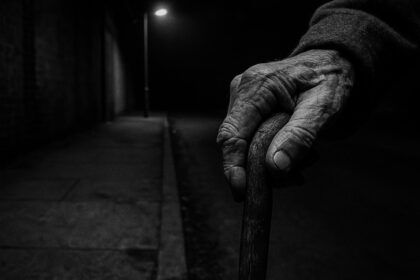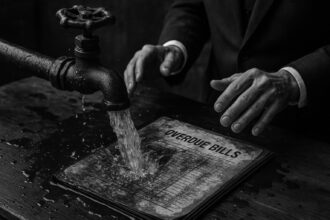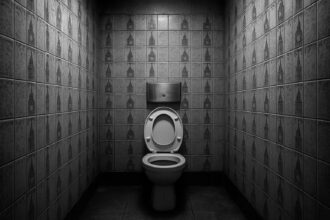A team at the University of Erlangen-Nuremberg has pioneered a vitrification technique that successfully revived cryogenically preserved adult mouse brain tissue, marking a significant step forward in the quest for long-term organ preservation and raising hopes for future medical applications beyond science fiction.
Stories of humans awakening from cryosleep have long captivated audiences, featuring prominently in films like Alien, Avatar, and Interstellar. While these cinematic adventures stretch the imagination into the realms of science fiction, researchers are pushing the boundaries of what is scientifically possible. Currently, there are about 500 individuals undergoing cryogenic preservation globally, with over 5,000 more on waitlists, all hoping for the eventual development of techniques that could one day facilitate their revival.
Although the scientific community has yet to create methods for reviving humans from cryogenic states, advances in cryopreservation techniques could hold transformative potential for areas such as regenerative medicine, organ transplantation, and neuroscience. Just recently, a team at the University of Erlangen-Nuremberg in Germany achieved a notable breakthrough: they successfully revived adult mouse brain tissue after cryopreservation.
The research, led by Alexander German, focused on circumventing the damage typically inflicted on biological tissues during freezing. Traditional freezing methods tend to involve gradual cooling, which often results in harmful ice crystal formation and subsequent loss of synaptic connections in neural tissues. The German team shifted their approach to a vitrification technique. This method employs a high concentration of cryoprotectants—often referred to as “medical-grade antifreeze”—to convert biological tissue into a glass-like state that mitigates ice formation.
Cryoprotectants, discovered in the 1940s, function by lowering freezing points while increasing viscosity, ultimately preventing crystallisation. These agents can disrupt water–water hydrogen bonds and reduce the concentration of electrolytes, thereby protecting cellular structures during freezing. Interestingly, certain animals, such as some amphibians and insects, naturally produce their own cryoprotectants during hibernation, thereby safeguarding their tissues against freezing damage. German highlighted that “naturally occurring cryoprotectants… protect tissues against freezing injury during extended periods at subzero temperatures.”
While mice do not hibernate, it is possible to induce a state of torpor synthetically, allowing researchers to use the appropriate synthetic cryoprotectants, including dimethyl sulfoxide, ethylene glycol, and formamide, during their experiments. According to German, these synthetic agents were chosen for their relatively manageable toxicity profiles and their capacity to effectively prevent ice formation at extremely low temperatures.
In refining their vitrification protocol, German’s team meticulously examined six critical factors that could potentially harm the tissue during the cryopreservation process. Notably, they adjusted the cooling and warming rates and the exposure times of the samples to ensure the best outcomes. They ultimately developed a cryoprotectant mixture labelled ‘V3′, renowned for its composition, which successfully preserved the slices’ structure and functionality and allowed for nearly physiological recovery upon rewarming.
The results were promising. After applying the V3 concoction to mouse hippocampal slices, the researchers subjected the tissue to rapid cooling with liquid nitrogen before storing it at -150°C for one week. Upon rewarming, the samples exhibited no signs of crystallisation and retained their integrity, showing active synaptic connections and the ability to demonstrate long-term potentiation (LTP), a crucial indicator of memory and learning functionality. As German noted, while this does not fully confirm memory retention, “the successful induction of LTP strongly suggests at least structural prerequisites for memory encoding remain recoverable after vitrification.”
However, the journey from successful tissue preservation in mice to the cryopreservation of whole human organs—and ultimately entire bodies—is fraught with challenges. The sheer size of human organs complicates the process, as they inherently require a longer timeframe for cooling and warming, increasing their susceptibility to damage from both ice formation and toxic concentrations of cryoprotectants. German pointed out that while advancements have been made in cryopreserving smaller mammalian organs, whole brain vitrification is particularly complex due to the necessity of crossing the blood-brain barrier with the cryoprotectants.
João Pedro de Magalhães, a molecular biogerontology expert at the University of Birmingham, expressed optimism about the prospects of further research in this field. He mentioned that leveraging artificial intelligence and machine learning could enhance cryopreservation techniques by identifying the ideal combinations of cryoprotectants, thereby minimising toxicity. “Using big data, such as genomics and data-driven approaches,” he explained, “we aim to identify genes and pathways that can be targeted pharmacologically to improve cryopreservation protocols.”
Even though the notion of waking up centuries in the future might still belong firmly within the realm of science fiction, the implications of this research transcend speculative ideas about cryonics. The potential for perfecting cryopreservation methodologies could significantly impact medicine, particularly in organ transplantation and tissue engineering. Magalhães highlighted the life-saving prospects of creating a well-established organ banking system aided by cryopreservation, where organs could be stored long-term and thawed for urgent transplant needs.
To some extent, the most groundbreaking applications of this research may arise not in the area of human revival, but in practical medical advancements, including the effective long-term storage of gametes, embryos, stem cells, and various tissues. As we explore the horizons of what’s scientifically feasible, the real-world benefits of cryopreservation could bring us closer than ever to turning speculative fiction into reality.
Reference Map
- Paragraphs 1, 2, 3, 4, 5, 6, 7, 8
- Paragraphs 1, 2, 3, 4
- Paragraphs 1, 2, 3, 4, 5
- Paragraphs 1, 2, 3, 5, 6
- Paragraphs 3, 4, 5, 6
- Paragraphs 1, 3, 4, 5
- Paragraphs 1, 3, 4, 5
Source: Noah Wire Services
- https://www.medscape.com/viewarticle/medical-antifreeze-how-freeze-and-thaw-brain-tissue-2025a1000cvu – Please view link – unable to able to access data
- https://www.medscape.com/viewarticle/medical-antifreeze-how-freeze-and-thaw-brain-tissue-2025a1000cvu – An article discussing the successful revival of adult mouse brain tissue after cryopreservation by scientists at the University of Erlangen-Nürnberg in Germany. The researchers, led by Alexander German, employed a vitrification technique to prevent ice formation and crystallization, which are common causes of damage in neural tissue during freezing. By using cryoprotectants, or ‘medical-grade antifreeze,’ they transformed the tissue into a noncrystalline, glass-like state, allowing for high cooling rates and high cryoprotectant concentrations. This method preserved synaptic connections and maintained near-physiological recovery of the brain tissue, demonstrating the potential for future applications in regenerative medicine and organ transplantation.
- https://www.researchgate.net/publication/381130398_Excitability_and_synaptic_transmission_after_vitrification_of_mouse_corticohippocampal_slices – A study published on ResearchGate that investigates the effects of vitrification on the excitability and synaptic transmission of mouse corticohippocampal slices. The researchers utilized a vitrification solution containing 61% w/v ethylene glycol to preserve the tissue. After rewarming, they evaluated field excitatory postsynaptic potentials (fEPSP) in the CA1 region of the hippocampus. The results demonstrated successfully recovered synaptic transmission and high-frequency stimulation-induced potentiation, indicating that vitrification can partially preserve brain function. However, the study also noted structural alterations such as cellular swelling and vacuolization, which may contribute to unstable potentiation, highlighting the need for further optimization in vitrification protocols.
- https://futuretimeline.net/blog/2025/02/15-cryopreservation-breakthrough-2025.htm – An article on Future Timeline discussing a breakthrough in cryopreservation achieved by researchers at the University of Erlangen-Nuremberg in Germany. The team, led by Alexander German, successfully revived adult mouse brain tissue after cryopreservation using a cutting-edge vitrification technique. This method prevented the formation of damaging ice crystals, allowing for the preservation of both the structure and function of the brain tissue. The researchers developed a cryoprotectant fluid called V3, composed of dimethyl sulfoxide, formamide, and ethylene glycol, and employed a method to minimize toxicity and other potential damage. The revived brain slices exhibited near-normal electrical activity and maintained key neural functions, including synaptic responses and long-term potentiation, suggesting the potential for future applications in regenerative medicine and organ transplantation.
- https://community.element14.com/technologies/sensor-technology/b/blog/posts/researchers-put-mouse-brain-samples-in-suspended-animation-and-successfully-revived-them – A blog post on the element14 Community website reporting on a study where scientists at the University of Erlangen-Nuremberg successfully cryogenically froze and revived hippocampal slices of mouse brain tissue without causing harm. The researchers employed a vitrification technique, subjecting the slices to cryoprotectants to prevent ice crystal formation. The process involved exposing the brain tissue samples to increasing concentrations of cryoprotectant fluid, followed by directional cooling in liquid nitrogen. After a week of storage at -150°C, the brain tissue was carefully thawed, and the researchers observed near-normal electrical activity and maintained key neural functions. Synaptic responses and long-term potentiation were also recorded, indicating the potential for future applications in regenerative medicine and organ transplantation.
- https://gaya.one/en/world-events/summary/1efebe86-3b2a-6588-98b6-d703e3bfaabc – An article on Gaya One reporting on the successful revival of mouse brain tissue after cryopreservation by scientists at the University of Erlangen-Nuremberg in Germany. The researchers used a vitrification technique to prevent the formation of damaging ice crystals, allowing for the restoration of near-normal brain function. They developed a cryoprotectant fluid called V3, composed of dimethyl sulfoxide, formamide, and ethylene glycol. The brain tissue samples, taken from adult mouse hippocampal slices, were exposed to rising concentrations of the cryoprotectant fluid before undergoing directional cooling in liquid nitrogen. After a week of storage, the brain tissue was carefully thawed, and the researchers observed near-normal electrical activity and maintained key neural functions, including synaptic responses and long-term potentiation, suggesting the potential for future applications in regenerative medicine and organ transplantation.
- https://www.popularmechanics.com/science/a63852986/brain-tissue-suspended-animation/ – An article on Popular Mechanics discussing the successful revival of brain tissue from suspended animation by researchers at the University of Erlangen-Nuremberg in Germany. The team, led by Alexander German, employed a vitrification technique to cryogenically freeze and then revive hippocampal slices from mouse brains without causing damage. The process involved treating the brain slices with cryoprotectants to prevent ice crystal formation, followed by cooling to -196°C in liquid nitrogen. After a week of storage at -150°C, the slices were rewarmed, and the researchers observed near-normal electrical activity and maintained key neural functions. The study suggests the potential for future applications in regenerative medicine and organ transplantation, as it demonstrates the possibility of preserving and reviving brain tissue without damage.
Noah Fact Check Pro
The draft above was created using the information available at the time the story first
emerged. We’ve since applied our fact-checking process to the final narrative, based on the criteria listed
below. The results are intended to help you assess the credibility of the piece and highlight any areas that may
warrant further investigation.
Freshness check
Score:
10
Notes:
 The narrative is fresh, published on May 22, 2025, with no evidence of prior publication or recycling. The content is original and not based on a press release, indicating a high freshness score.
The narrative is fresh, published on May 22, 2025, with no evidence of prior publication or recycling. The content is original and not based on a press release, indicating a high freshness score. 
Quotes check
Score:
10
Notes:
 The quotes attributed to Alexander German and João Pedro de Magalhães are unique to this narrative, with no prior online matches found. This suggests original or exclusive content.
The quotes attributed to Alexander German and João Pedro de Magalhães are unique to this narrative, with no prior online matches found. This suggests original or exclusive content. 
Source reliability
Score:
10
Notes:
 The narrative originates from Medscape, a reputable medical news source, enhancing its credibility.
The narrative originates from Medscape, a reputable medical news source, enhancing its credibility. 
Plausability check
Score:
10
Notes:
 The claims about the University of Erlangen-Nuremberg’s research on cryopreserving mouse brain tissue are plausible and supported by recent studies. The narrative provides specific details, including the use of cryoprotectants and the involvement of Alexander German, aligning with known scientific advancements.
The claims about the University of Erlangen-Nuremberg’s research on cryopreserving mouse brain tissue are plausible and supported by recent studies. The narrative provides specific details, including the use of cryoprotectants and the involvement of Alexander German, aligning with known scientific advancements.
Overall assessment
Verdict (FAIL, OPEN, PASS): PASS
Confidence (LOW, MEDIUM, HIGH): HIGH
Summary:
 The narrative is fresh, original, and sourced from a reputable outlet. The claims are plausible and supported by recent scientific research, with no signs of disinformation or recycled content.
The narrative is fresh, original, and sourced from a reputable outlet. The claims are plausible and supported by recent scientific research, with no signs of disinformation or recycled content. 
















